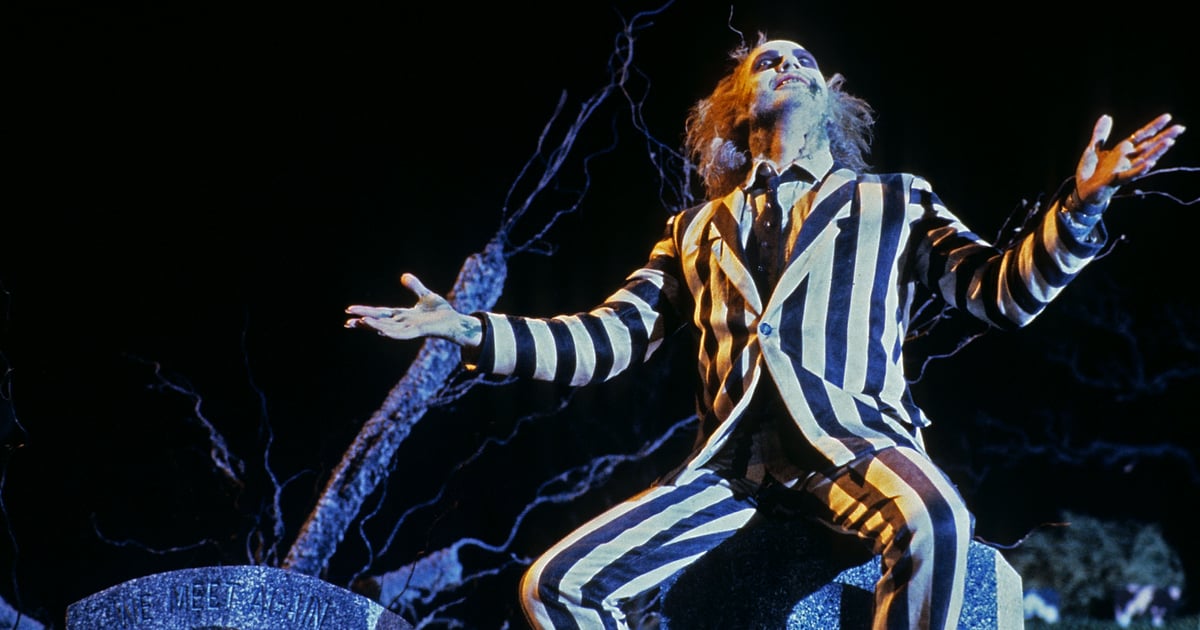

Maybe Delia and her cabal actually would have if the song selected had been the Ink Spots’ “If I Didn’t Care,” as originally suggested in the script by writer Warren Skaaren (who had also suggested “R&B music” for the sonic leitmotif as opposed to Belafonte).Īs for the origins of “Day-O” being a call-and-response song stemming from the torment of Jamaican workers loading bananas onto ships (at one point, Jamaica’s leading export), well, that adds something of an icky coating to the scene as well (much in the way it undoubtedly did when Justin Trudeau wore blackface while singing it in high school).
#Beetlejuice day o scene movie#
And, in some regards, viewers can even see the seed of Nopecoming from this movie in terms of OJ (Daniel Kaluuya) and Em (Keke Palmer) being more concerned with getting the “Oprah shot” of the UFO on their ranch than running away from it in horror. For, rather than terrifying them (the Maitlands’ intended outcome to avoid resorting to summoning Betelgeuse ), they see it as an opportunity to commodify the presence of these “supernatural beings.” A sign of the uber-neoliberal times under Reagan, one supposes. In terms of “hauntings,” possessing people to lip sync and dance along to Belafonte is on a Scooby-Doo level of “scaring.” Delia and her guests tend to agree as they turn out to be absolutely delighted by the possession. Because, yes, people living in New York can’t seem to fathom that art is actually made (to better effect) outside their precious city. And it wasn’t just Belafonte’s “Jump in the Line” that was used either-viewers will also recall “Day-O” being “played” during Delia’s (Catherine O’Hara) dinner party for her agent, Bernard (Dick Cavett), and the art world “glitterati” he’s brought along to humor her attempt at leaving New York. Surprisingly, the song originally intended for this scene was Percy Sledge’s “When A Man Loves A Woman.” Not exactly “the vibe” one can imagine going with this particular moment. Alas, as Lydia lip syncs to the “Jump in the Line” lyrics in addition to dance-levitating, an added layer of “grafting” occurs. And he brought music and politics together as few artists of his time did (Bob Dylan has nothing on Belafonte). He was an activist and freedom fighter going back to the outset of the civil rights movement. They don’t much care to investigate further into who’s actually singing or the fact that Belafonte was so much more than a man forever associated with a Tim Burton movie. Similarly, upon viewing Lydia beg her ghost besties, Adam (Alec Baldwin) and Barbara (Geena Davis) Maitland, “Can I?” after she receives the promised good grade on her math test that they wanted, all one thinks of is Lydia then levitating to “Jump in the Line” as her reward. And, although Madonna never made any declaration about, like, “inventing” vogue, most listeners weren’t liable to do much digging into the background of where it came from content instead to mimic Madonna’s dance moves from the video…such moves being grafted from the likes of her backup dancers Luis Camacho and Jose Gutierez. The debate about whether or not Madonna’s spotlighting of voguing was appropriation or appreciation rages on to this day, with one camp ( including her very own backup dancers from Blond Ambition Tour) insisting that what she did was a boon for the queer community and another insisting that it’s another prime example of white folks pillaging and plundering whatever they want from the marginalized and claiming it as their own. But it was Belafonte’s songs in Beetlejuice that predated what Madonna would end up doing in a far more noticeable manner.

And yes, it involved a white girl dancing as a means to subsequently “get the message out” about a so-called subculture-this word being a dig in many respects to those who “can’t” fit in with the “dominant” (read: oppressor) culture. The latter occurred two years after the release of Beetlejuice (1988). Yet, in another, they subjected Belafonte to what could have later been referred to as the Madonna/Vogue phenomenon. So yes, in one respect, Tim Burton and Ryder did Belafonte “a solid” by reinvigorating his music for a new generation (and lily-white race). In the wake of Harry Belafonte’s death on April 25th, there’s no doubt that an embarrassing number of people likely had to be reminded of who he was via the nudge, “Remember that scene from Beetlejuice?” And yes, a great many probably only know Belafonte’s work as a result of that iconic scene of Lydia Deetz (Winona Ryder) levitating to the tune of “Jump in the Line” (falsely known to some as “Shake Shake Shake Señora”) at the end of Beetlejuice.


 0 kommentar(er)
0 kommentar(er)
